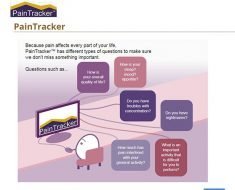Research from Massey University suggests the timely identification, notification, and rapid implementation of control measures to combat gastroenteritis outbreaks will limit its impact and duration, especially in aged care facilities among those most vulnerable.
Gastroenteritis describes infection of the gastrointestinal tract, which can manifest in diarrhoea, nausea, fever, abdominal pain and/or vomiting. Children under five, adults over 65, pregnant women and immunocompromised people are at increased risk of developing gastroenteritis.
In 2014, gastroenteritis accounted for 95 per cent of all outbreak notifications in New Zealand and 37.3 per cent of these outbreaks were confirmed as due to the pathogen norovirus, the most common pathogen implicated in institutional gastroenteritis since 2007.
Co-supervisor of the research, Massey’s Dr. Julie Collins-Emerson, said the study explored the seasonality and trend of institutional gastroenteritis outbreaks.
“Institutional outbreaks have constituted about half the gastroenteritis outbreaks in New Zealand every year since 2006 and the number has only risen. The aim was to quantify the association between the length of time it takes for facilities, such as aged care, early childhood education centres, hospitals and defence facilities, to notify the public health service (PHS) and the associated duration and size (incidence risk) of the outbreaks.
“By understanding how these two are linked, we could then understand how to best support best practice in managing outbreaks.”
An analysis was performed on institutional gastroenteritis outbreak data from a North Island public health service between January 1, 2009 and December 31, 2014. Time-series analysis was used to explore the seasonality and trend of outbreaks. Multivariate analyses were performed to quantify the association between the time to notify PHS and the duration and size of outbreaks.
“Overall, we found that when the public health service was notified early, the outbreak was smaller both in size and duration,” Dr. Collins-Emerson says. “Combined with rapid implementation of control measures, the cost of the outbreak can be much smaller both in loss of life and economically.”
The research highlighted aged care facilities at particular risk of institutional gastroenteritis outbreaks.
Dr. Collins-Emerson says it is well known that gastroenteritis incidence is lower in adults compared to children, but in elderly it can be deadly.
“In 2014, 34.9 per cent of gastroenteritis outbreaks in New Zealand were notified from aged care institutions. The elderly are vulnerable to gastroenteritis because of pre-existing conditions such as chronic disease, weakened immune function, malnutrition, malabsorption and communal living in a long-term care facility. Individuals living in aged care institutions are more vulnerable than the general population and communal living facilitates the spread of infection.”
Dr. Collins-Emerson says that there are simple things the public can do to help stop the spread.
“Good hygiene is crucial. Something as simple as washing or sanitising your hands before entering and leaving such institutions can help stop the spread. Additionally, people can be vigilant for signs of gastro, such as good communication between caregivers and the childcare centre when parents are keeping children at home because of a ‘tummy bug’.
“This information can be really valuable in helping to identify gastro outbreaks early on and can help limit the size and spread.”
Future work
Dr. Collins-Emerson says future work is needed to further protect the public.
“Future studies should consider more complex modelling of the association between time to notify the PHS, the duration and the size of the outbreak combined with an investigation of the sensitivity of the definition of the start of the outbreak. Not to mention better data capture is important to provide pathogen specific interventions and to more clearly estimate the cost of outbreaks.
We also identified that improved identification of associated cases beyond the staff and residents, for example family members of staff and residents/ attendees, visitors to the institutions, will help more clearly define the extent of the burden associated with institutional outbreaks.” Dr. Collins-Emerson, of the School of Veterinary Science, says.
Source: Read Full Article





